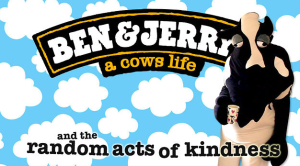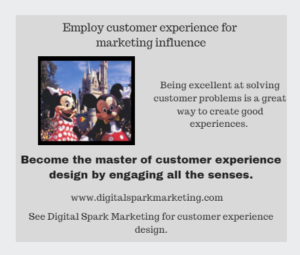Social networking is not about farming followers, it’s a way of cultivating relationships. Is relationship marketing strategy a term you recognize?
It is not really a new concept, just a new term perhaps. Do you use relationship marketing to improve your business?

Think about the process of developing and managing customers’ individual relationships with your firm.
This should include the Web site, a loyalty program, the contact center, at the point of purchase, or in after-sale service.
All take continuous attention to detail, don’t they? And they all offer ways to engage customers through relationship marketing.
Here is a video you will find useful on this subject.
Let’s dig into this subject a little deeper
What is relationship marketing?
In ‘Relationship Marketing ~ A Consumer Experience Approach’, it suggests that the primary objective of relationship marketing (RM) is to develop and maintain a customer base. A customer base that is committed to the brand and profitable for the business.
RM focuses on not just attracting, but also retaining customers with the development of a long-term relationship.
Here is a definition we like to use:
“Relationship marketing is a strategy designed to foster customer loyalty, interaction and long-term engagement. It is designed to develop strong connections with customers. It does this by providing them with information directly suited to their needs and interests. It also does this by promoting open communication.”
Business is a “people activity”, there is no doubt. People like to do business with people they know, like, and trust. Ones with whom they have relationships are at the top of the desirable business option list.
The stronger the relationships with your customers, the greater will be their trust and loyalty in your business. And the greater their trust and loyalty, the more business they generate for you. It is as simple as that.
Related: 7 Secrets to the Lego Blog Marketing Campaigns … Effective Marketing?
Here is a story I like to tell and retell. A landscape gardener ran a business that had been in the family for two or three generations. The staff was happy, and customers loved to visit the store, or to have the staff work on their gardens or make deliveries – anything from bedding plants to ride-on mowers.
For as long as anyone could remember, the current owner and previous generations of owners were extremely positive happy people.
Most folks assumed it was because they ran a successful business.
In fact, it was the other way around…
A tradition in the business was that the owner always wore a big lapel badge, saying Business Is Great!
The business was indeed generally great, although it went through tough times like any other. What never changed however was the owner’s attitude, and the badge saying Business Is Great!
Everyone who saw the badge for the first time invariably asked, “What’s so great about business?” Sometimes people would also comment that their own business was miserable, or even that they personally were miserable or stressed.
Anyhow, the Business Is Great! badge always tended to start a conversation, which typically involved the owner talking about lots of positive aspects of business and work, for example:
the pleasure of meeting and talking with different people every day
the reward that comes from helping staff take on new challenges and experiences
the fun and laughter in a relaxed and healthy work environment
the fascination in the work itself, and in the other people’s work and businesses
the great feeling when you finish a job and do it to the best of your capabilities
the new things you learn every day – even without looking to do so
and the thought that everyone in business is blessed – because there are many millions of people who would swap their own situation to have the same opportunities of doing a productive meaningful job, in a civilized well-fed country, where we have no real worries.
And so the list went on. And no matter how miserable a person was, they’d usually end up feeling a lot happier after just a couple of minutes listening to all this infectious enthusiasm and positivity.
It is impossible to quantify or measure attitude like this, but to one extent or another it’s probably a self-fulfilling prophecy, on which point if asked about the badge in a quiet moment, the business owner would confide:
The badge came first. The great business followed. And that my friends is the best social business strategy that I know of.
Simple ideas on consumer engagement start with a foundation of little things. Little things that, when not done well, can make the more complex customer experience design actions a moot point. We call these the relationship marketing truths.
Relationship marketing truths
Set your relationship marketing course with these simple truths:
Marketing starts by:
Knowing and understanding the customer
Listen, observe, then:
Engage
Treat your customers like:
Your best friends

Personalize:
Your brand.
Give honest help in buying decisions:
No selling!
Everyone is a marketer:
And everything is marketing.
A customer’s positive experience creates:
Great marketing
Establish clear value propositions:
Through differentiation.
Keep your messages:
As simple and relevant as possible.
Know why your customers choose you:
Instead of your competition
Build all of your relationship marketing on these basic truths.
Studies show time and again, your best and most loyal customers are the most apt to tell their friends about your business. This creates strong word of mouth marketing.
Word of mouth marketing is the most important element of any relationship marketing campaign.
Why a relationship marketing strategy?
We believe businesses need to have a relationship marketing strategy for 4 basic reasons:
Customer Feedback
When the organization’s culture facilitates open communication and cooperation, consumer concerns can quickly be addressed. By paying careful attention to positive and negative trends, organizations can use this feedback to make appropriate adjustments. Adjustments to product or service offerings, ensuring the best of customer satisfaction.
Consistent Customer Experience
Organizations that are aligned across all touchpoints seamlessly share information. They work together to ensure customer’s needs are addressed with minimum effort.
This is particularly important when the consumer is experiencing challenges with the product or service. Quickly resolving issues builds trust and it can improve customer relationships.

Types of relationship marketing
Customer Advocates
Consumers who are pleased and enjoy a consistent experience, increasingly share this information with each other. Increasingly consumers are turning to each other for suggestions and recommendations. Make it easy for your customers to share their experiences.
However, first make sure they have a consistently good experience.
Relationship marketing strategy … innovation
Organizations, like Starbucks through MyStarbucksIdea.com, invite their customers to provide ideas. Consumers are allowed to share, vote and discuss each other’s ideas. Most important, they are kept apprised of the status of ideas.
Relationship marketing offers powerful benefits. However, it takes discipline, strategy and a supportive environment. What are other benefits that your business receives?
So how are well-known companies putting relationship marketing to use? More importantly, how can you? Let’s take a closer look:
Coca Cola’s ‘Share a Coke’ campaign
Coke started the first step of its ‘share a coke’ campaign with product personalization. For the first time in history, 250 of the most popular first names in each country were shortlisted and printed on the iconic red and white Coke labels, instead of the Coke logo.
Coke then used mass media channels like television, outdoors and radio to communicate to users. Their message? Simply that their favorite drink just might have their name on it.
Each bottle also carried a hashtag #ShareACoke to remind users to post pictures. Pictures of their personalized Coke bottles on social media using the hashtag.
The experience of seeing one’s own name on Coke bottles was so novel and addictive that people actually paid premium prices. They wanted to ensure they could lay their hands on their ‘own’ bottles of Coke. They shared their pictures on social media like wildfire.
Images of Coke bottles shared on Instagram, Twitter and Facebook with the #ShareACoke hashtag were then plastered across across the country.
Sharing a Coke with someone isn’t just about enjoying a drink. To Coke and its customers, it’s about capturing a moment in time and building a friendship. That something all social commerce wants to do.
And while you may not be a giant corporation, you can still add a personalized touch through brand incentives.
Nordstrom’s Pinterest Integration
Catching on to the fact that Pinterest is a fabulous social network, Nordstrom started highlighting its products. The products that were popular on Pinterest were tagged with a “Popular on Pinterest” sign on the physical item in stores.
Launched as a pilot activity in January 2013, the experiment has been so successful that today every Nordstrom outlet across the US showcases its most popular items on Pinterest.
They are included with a ‘Top Pinned’ section inside physical stores. Shop assistants are equipped with an in-house iPad app that shows trending items for the day. It helps them tag these items appropriately in-store.
Ice Bucket Challenge
Much of the viral marketing that happened last year surrounded the Ice Bucket Challenge. This challenge was designed to raise money for ALS (Amyotrophic Lateral Sclerosis, also known as Lou Gehrig’s disease.
The virality of tagging pals to participate and video their reaction is what made the challenge so memorable for so many.
Plus, it started in the hottest part of the year, so it was natural that people didn’t mind “cooling off for a cause”.
Of course, you don’t need a major celebrity’s endorsement to start your own viral sharing challenge. Think about something simple, fun and do-able, by just about anyone.
Related post: Learning from 2 of the Best Marketing Strategy Case Studies
New challenges have already sprung up to piggyback off of the Ice Bucket Challenge’s massive success. Whether or not they’ll have the same incredible success that the ALS Association saw remains to be seen. However the seeds of promotion have a chance. You’ll never know until you try.
The bottom line
These are not things that we do not already know, of course.
Yet these little things list simply reminds us of what we already know but may have forgotten. That is, it is up to us to put these lessons of relationship marketing into daily use through persistence and practice.
Remember … all customer-facing employees need to be engaged in customer relationship building.

